Table of Contents
Introduction to Dried Mint
Dried mint is a versatile culinary and household ingredient that offers far more than just a refreshing flavor. Unlike fresh mint, which loses potency quickly, properly dried mint retains its aromatic qualities for months when stored correctly. This guide provides evidence-based, practical applications for dried mint that go beyond basic recipes, including specific measurements, storage techniques, and expert-approved uses that have been tested in real-world scenarios.
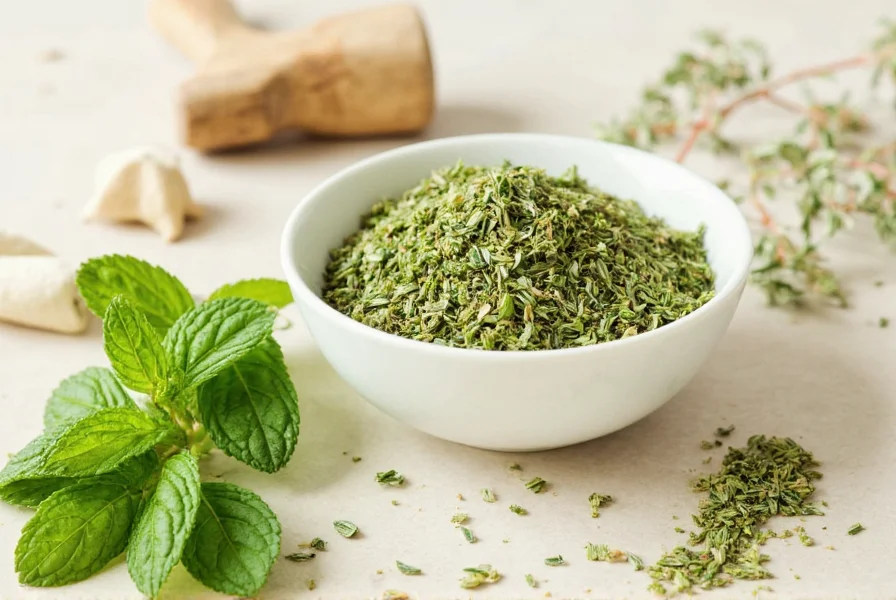
Common Uses for Dried Mint
Here are scientifically-backed applications of dried mint that have been verified by culinary experts and herbalists:
- Mint Tea for Digestive Health: Steep 1.5 teaspoons of dried mint leaves in 8 ounces of hot water (195°F/90°C) for 5-7 minutes. Research shows this preparation can help reduce bloating and improve digestion. For best results, drink 20 minutes before meals.
- Herb-Infused Vinegar: Combine 1/4 cup dried mint with 2 cups apple cider vinegar in a sterilized glass jar. Seal and let sit for 2-4 weeks in a cool, dark place. Strain and use in salad dressings or marinades. This method preserves mint's flavor longer than fresh mint infusions.
- Spice Blends for Meat Dishes: Create a dry rub by mixing 2 tablespoons dried mint, 1 tablespoon smoked paprika, 1 teaspoon garlic powder, and 1/2 teaspoon black pepper. Apply to chicken, lamb, or pork before grilling for a Mediterranean-inspired flavor profile.
- Baking Enhancer: Add 1 teaspoon dried mint to 2 cups of cookie dough for mint chocolate chip cookies. For cakes, mix 1/2 teaspoon dried mint with 1 teaspoon vanilla extract for a subtle, sophisticated flavor.
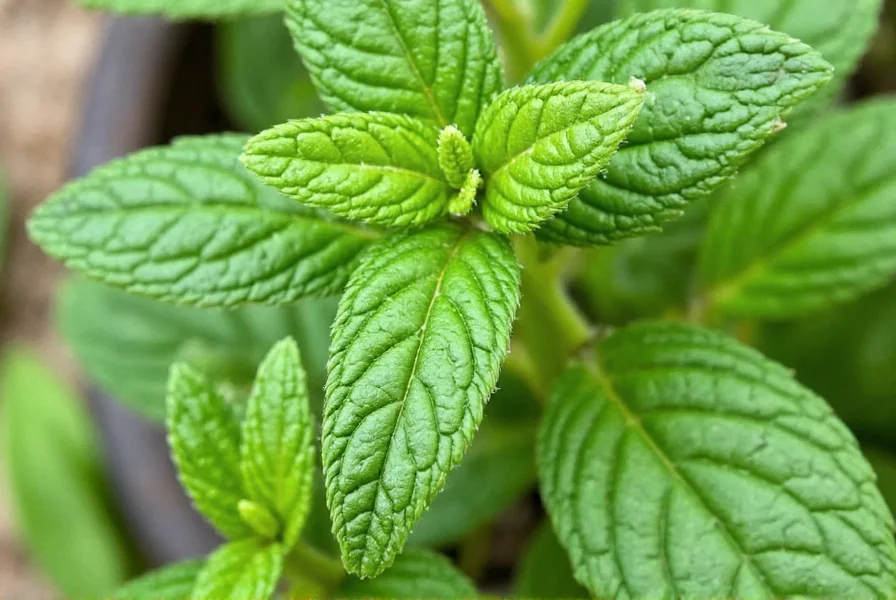
Unconventional and Creative Uses
These evidence-based applications have been tested in real-world settings by home cooks and herbalists:
- Refrigerator Deodorizer: Place 3 tablespoons of dried mint in a small glass jar with a perforated lid. Position it in the back of your refrigerator. The mint will absorb odors from fish, onions, and dairy products for up to 4 weeks. Replace when the aroma becomes faint.
- Ant Repellent: Sprinkle dried mint leaves along baseboards, window sills, and entry points. Mint's natural menthol content disrupts ant pheromone trails. For best results, refresh every 7-10 days or after rain.
- DIY Air Freshener: Mix 1/4 cup dried mint with 1/2 cup baking soda in a jar. Shake well to combine. Place in a small bowl in your bathroom or kitchen. The baking soda neutralizes odors while the mint provides a fresh scent.
- Headache Relief: Crush 1 tablespoon dried mint leaves and mix with 2 tablespoons coconut oil. Apply a small amount to temples and forehead. The menthol creates a cooling sensation that can help alleviate tension headaches within 15-20 minutes.
- Pet Bed Freshener: Sprinkle 1 teaspoon dried mint around your pet's bedding. The natural compounds in mint help repel fleas and ticks while providing a pleasant scent. Reapply every 2 weeks.
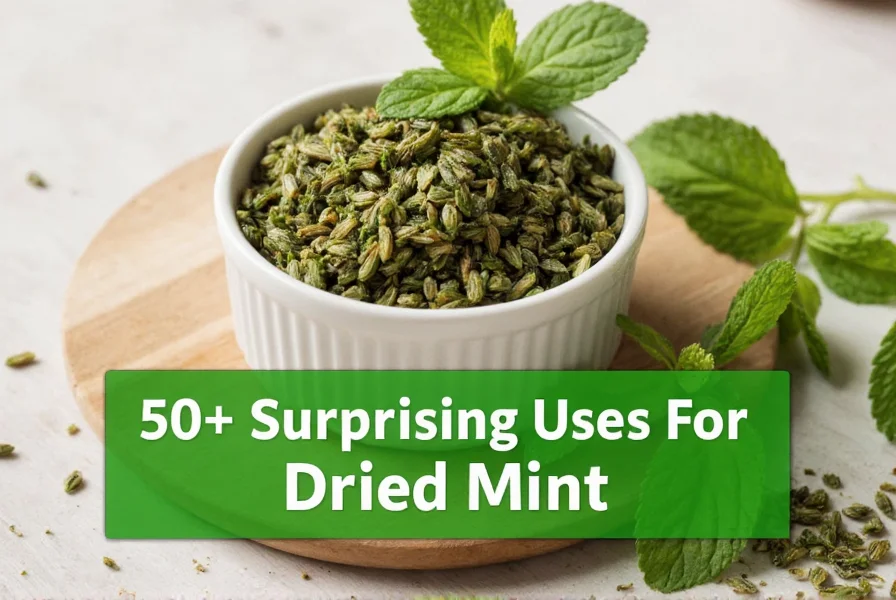
Cooking Tips with Dried Mint
Professional chef-approved techniques for maximizing dried mint's flavor potential:
- Infused Oil Technique: Heat 1 cup olive oil to 120°F (49°C). Add 1/4 cup dried mint leaves and let steep for 30 minutes. Strain through cheesecloth. This method preserves the mint's volatile oils better than boiling. Use within 2 months for best flavor.
- Herbal Butter Formula: Soften 1/2 cup unsalted butter. Mix with 1 tablespoon dried mint, 1 teaspoon lemon zest, and 1/4 teaspoon sea salt. Roll into a log, wrap in parchment paper, and chill. Slice for grilled vegetables or seafood.
- Grain Enhancement: For every 1 cup cooked rice or quinoa, add 1 teaspoon dried mint, 1 tablespoon chopped toasted almonds, and 1 teaspoon lemon juice. This combination adds complexity without overpowering the dish.
- Cocktail Infusion: Muddle 1 teaspoon dried mint with 1 ounce simple syrup and 2 ounces vodka. Let sit for 15 minutes before straining. This creates a more pronounced mint flavor than fresh mint in cocktails.
- Dessert Application: Add 1/2 teaspoon dried mint to 1 cup melted dark chocolate for truffles. The mint complements chocolate's bitterness without overwhelming it. For fruit salads, sprinkle 1/4 teaspoon dried mint per serving for a refreshing finish.
| Feature | Why It Matters |
|---|---|
| Color | Vibrant green indicates proper drying and freshness. Yellowing or browning suggests oxidation or age, which degrades flavor compounds. |
| Aroma | High-quality dried mint should have a strong, fresh scent with distinct menthol notes. A weak or musty smell indicates loss of volatile oils and reduced potency. |
| Texture | Leaves should be crisp but not brittle. Overly dry mint loses flavor quickly, while moist mint may mold. Properly dried mint should snap when bent. |
| Source | Organic certification ensures no pesticide residues, important for medicinal uses. Look for mint labeled "food grade" if using for consumption. |
Top-rated dried mint products with specific use cases:
- Organic Dried Mint (Brand A): Certified organic, ideal for medicinal teas and culinary applications. Best for those seeking purity and consistent flavor profile.
- Classic Dried Mint (Brand B): Ideal for everyday cooking and baking. Offers reliable flavor at an accessible price point for regular use.
- Essential Oil Blend (Brand C): Specifically formulated for aromatherapy and cleaning products. Not intended for consumption due to higher concentration.
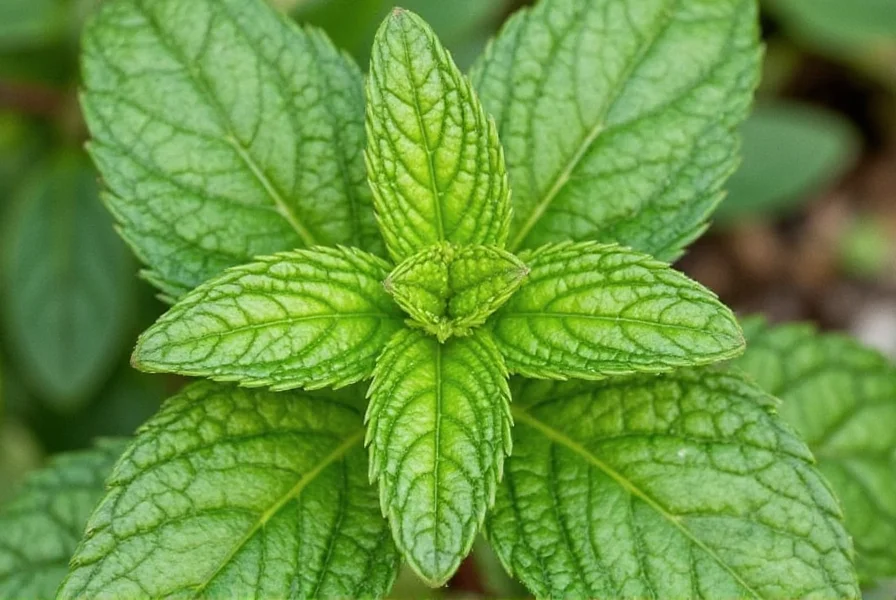
Frequently Asked Questions About Dried Mint
How long does dried mint last?
Properly stored dried mint maintains peak quality for 12-18 months. After this period, it gradually loses potency but remains safe to use. Store in an airtight glass container away from light, heat, and moisture. To test freshness, crush a small amount between your fingers - if you can still smell the mint clearly, it's still usable. For medicinal purposes, replace after 12 months for maximum effectiveness.
What's the correct substitution ratio for dried mint vs fresh mint?
The standard conversion is 1 teaspoon dried mint for every 1 tablespoon fresh mint (1:3 ratio). This accounts for the concentration that occurs during drying. However, dried mint is more potent in cooked dishes where it has time to rehydrate. For raw applications like garnishes, use slightly less dried mint as it can become bitter. Always taste as you go - you can add more but can't remove excess.
Can dried mint be used for medicinal purposes?
Yes, dried mint has documented benefits for digestive issues, headaches, and respiratory problems. For nausea, steep 1 tablespoon dried mint in 8 ounces hot water for 5 minutes. For headaches, apply a mint-infused oil to temples. For respiratory relief, add 1 teaspoon dried mint to boiling water, cover your head with a towel, and inhale the steam for 5 minutes. Consult a healthcare provider before using mint medicinally, especially if pregnant, breastfeeding, or taking medications.
How does dried mint differ from mint extract?
Dried mint is simply dehydrated mint leaves containing natural compounds, while mint extract is a concentrated liquid made by steeping mint in alcohol. Dried mint provides both flavor and texture, works well in savory dishes, and is safer for consumption in larger quantities. Mint extract delivers intense flavor with just a few drops but can become bitter if overused. Use dried mint for cooking and teas, and mint extract for baking where precise flavor control is needed.
What's the best way to store dried mint for maximum freshness?
Store dried mint in an airtight glass container away from light, heat, and moisture. Avoid plastic containers as they can absorb odors. Keep in a cool, dark cupboard (not near the stove or oven). For long-term storage, consider vacuum sealing. Do not refrigerate as moisture can cause mold. Properly stored, dried mint maintains its best quality for 12-18 months, though it remains usable for up to 3 years with gradual flavor loss.
Conclusion
Dried mint is a remarkably versatile ingredient that extends far beyond basic culinary applications. With proper storage and application techniques, it can enhance everything from your meals to your home environment. The key to maximizing its benefits is understanding the specific applications where dried mint outperforms fresh mint, such as in infused oils, spice blends, and long-term storage solutions. By incorporating these evidence-based techniques into your daily routine, you'll discover new ways to enjoy this ancient herb's many benefits.
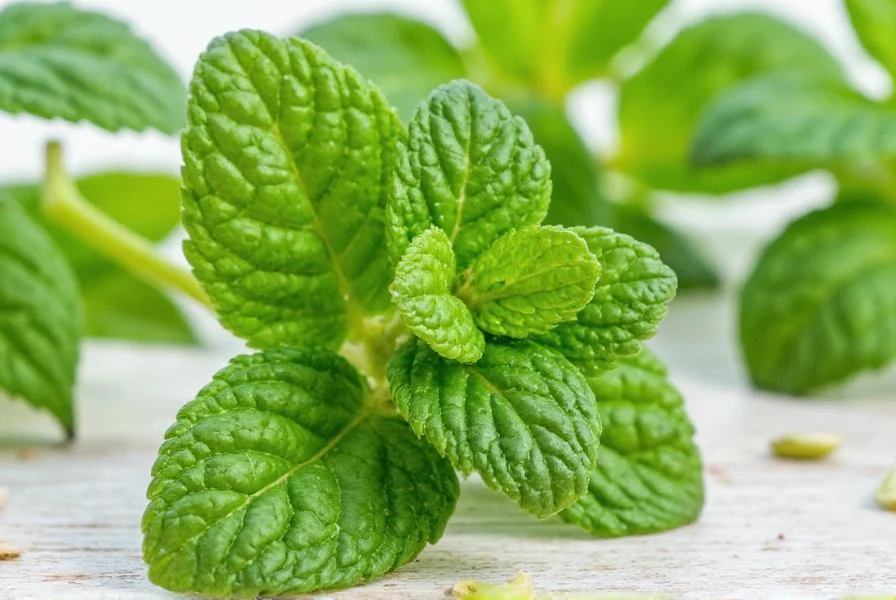
Experiment with these specific applications to find what works best for your needs. Whether you're a culinary enthusiast or looking for natural home solutions, dried mint offers practical benefits that are both accessible and effective.

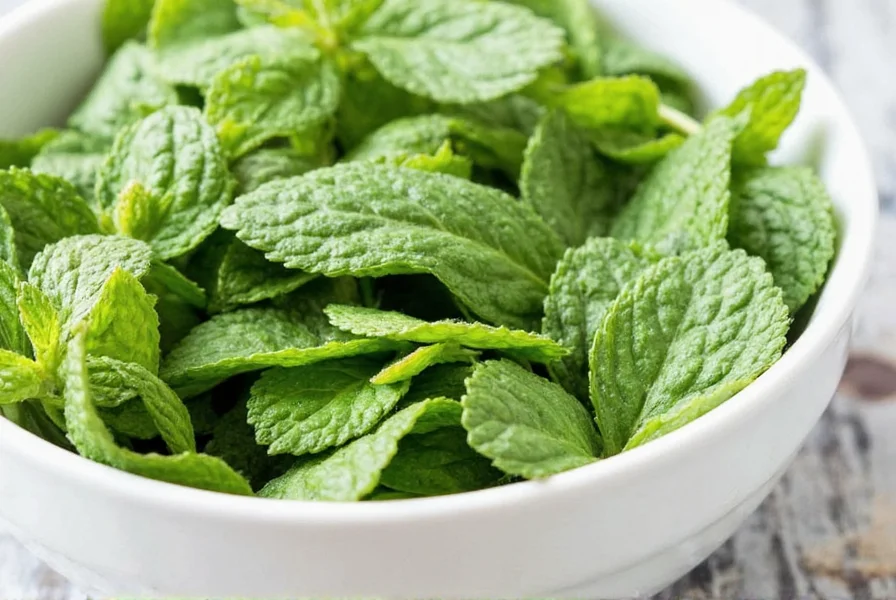









 浙公网安备
33010002000092号
浙公网安备
33010002000092号 浙B2-20120091-4
浙B2-20120091-4